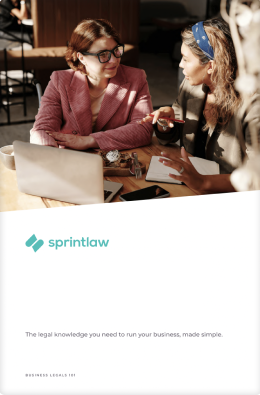Contents
If you’re a software developer, or you own a software, you can let other parties use this software for some profit.
It’s great for both your business and theirs, but it’s crucial that you capture this arrangement in writing. Why?
At the end of the day, you’re handing over your IP to someone else and allowing them to use it for their own benefits. So, you’d want to ensure that there are limits to how they use it so as to protect your business and your IP.
For example, how much are you earning from this arrangement? How long can they use your software for? To what extent can they use it for their own earnings?
These are all considerations under a standard licence agreement. Licences can be used for IP and real property (for example, you can licence your personal designs that you created). Read on to find out more about Software Licence Agreements.
How Does Licensing Work?
Licensing is essentially where one party (the licensor) gives another party permission to use certain property (the licensee), on the condition that they are compliant with the licensor’s terms.
In this context, the licensor is allowing the licensee to use the licensor’s IP, and the terms would be set out in an IP Licence Agreement.
Can I Licence My Software?
It’s common for software developers to use licence agreements for their software because they can tailor the platform to different clients. Each business has different needs, so you can make good profit from licensing your creative works and IP to other parties who may need it for their business.
| Example If you’re a software developer, you might have lots of clients with different needs. For example, a business that offers payment plans for school fees might approach you with a project for a software that facilitates their payment plans. Let’s assume you successfully built this software and it is ready to go live. From here, you have the option to transfer IP ownership to that business. In other words, you’ll no longer be recognised as the owner of the software, but rather, this business will be the owner (to do this, you’ll need an IP Assignment Deed). But let’s say you don’t want to surrender ownership. This is where you can opt for a Licence Agreement. Under a Software Licence Agreement, the software you created for them is still yours (legally, at least) and you are simply giving them the right to use that software on your terms. So, you could specify that they can only use the software for a year, and they’ll need to renew it after that point for a certain fee at your discretion. Further, you could also stipulate your right to terminate the Licence at any time, at your full discretion. The licensee would need to agree to your terms in order to use your software. |
What Is In Included In A Licence Agreement?
Like we mentioned before, licensing involves allowing another party to use your property on your terms. So, it’s important to think carefully about what these terms will be as it will determine the extent of the licensee’s freedom to use your IP.
A standard licence agreement will include some or all of the following:
- Licence fees – how much does the licensee need to pay, and what payment arrangement will you require?
- Termination – will you, the licensor, be able to terminate the Licence whenever you like?
- Renewal – can the licensee renew the Licence should it expire or end?
- Intellectual Property (IP) – you want to clarify whether the IP remains under the legal ownership of the licensor, and rules around how they can use your IP
- Reverse engineering – when licensing software, there is a risk of stealing IP through reverse engineering
- Confidentiality – you may want to include Confidentiality Clauses if the licensee is being given access to classified data and information through the Licence
- Liability – if the licensee runs into trouble with the software, is the licensor liable or the licensee?
- Rights and responsibilities – it’s good practice to outline what each party can and can’t do under the arrangement, as well as potential legal consequences
Each business will have its unique needs, so your Licence Agreement should be drafted based on these specific requirements.
Where Can I Get A Software Licence Agreement?
If you need a Licence Agreement for your software, you’ve come to the right place. At Sprintlaw, we offer a Software Licence Agreement package which includes the following:
- Software Licence Agreement tailored to your business’ specific needs
- Phone consultations with a Sprintlaw lawyer who can advise you on the legal issues that apply to you
- 1 complimentary amendment to the final draft we provide you
Next Steps
When it comes to Data and Privacy, things can get tricky. It gets even more complicated when you’re dealing with IP ownership and licences, as ownership determines liability and responsibilities among other things.
If you’re licensing software to other people, you want to capture the key details of your arrangement in writing so that any potential disputes don’t become a headache for you later. This way, all parties are clear on what they can and can’t do, and you know exactly what you’re responsible for with respect to the use of the software.
If you would like a consultation on your options going forward, or need help with Intellectual Property for your business, you can reach us at 1800 730 617 or team@sprintlaw.com.au for a free, no-obligations chat.
Get in touch now!
We'll get back to you within 1 business day.












